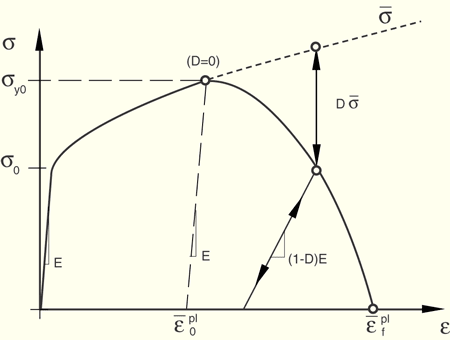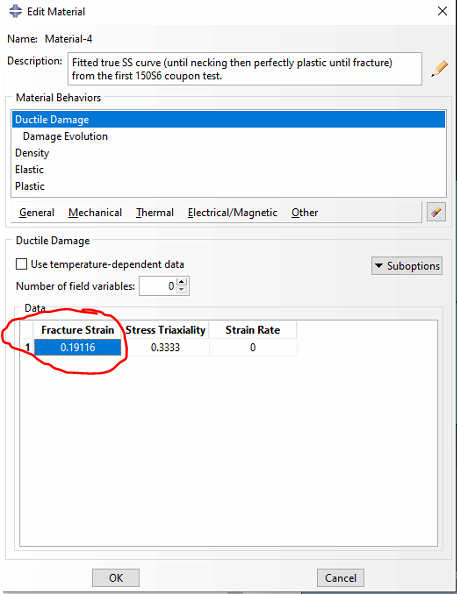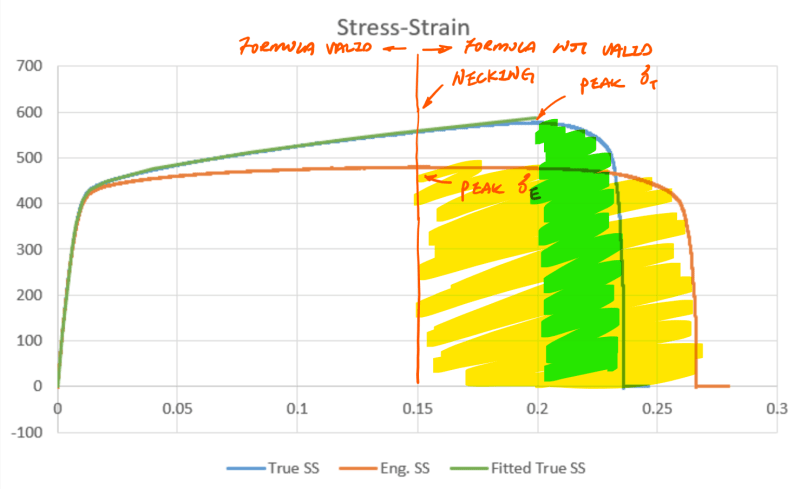hwa0725
Structural
- Feb 16, 2021
- 18
Hi all,
Not sure if it was just me who found the description for ductile damage in the ABAQUS manual a little confusing (perhaps misleading). From the example plot taken from ABAQUS manual, clearly, the damage is initiated at epsilon(0,p) and completely fractured at epsilon(f,pl). However, when it comes to filling the table in CAE, it asks for 'fracture' strain instead of strain at damage initiation... It was very confusing until reading this post here Link (thanks OP and gents answered to this)


Now let's dive into my question after all the complaints.. Suppose I have conducted the uniaxial tensile test and plotted the engineering and true stress-strain curves as below. Is the true strain corresponding to engineering strain where the necking occurs (i.e. peak engineering stress) my strain at damage initiation (A.K.A. Fracture strain by ABAQUS)?
Also, since the formulas to convert stress & strain from engineering to true value only hold up to necking, how am I supposed to find out epsilon(f,pl)? Note, from the plot I have below, I continue using the formulas beyond necking even though they are no longer valid. I suppose what I am trying to ask is how to find out the actual true stress-strain profile after necking to calculate the fracture energy required for damage evolution in ABAQUS?

Thanks a mil,
Heng
Not sure if it was just me who found the description for ductile damage in the ABAQUS manual a little confusing (perhaps misleading). From the example plot taken from ABAQUS manual, clearly, the damage is initiated at epsilon(0,p) and completely fractured at epsilon(f,pl). However, when it comes to filling the table in CAE, it asks for 'fracture' strain instead of strain at damage initiation... It was very confusing until reading this post here Link (thanks OP and gents answered to this)


Now let's dive into my question after all the complaints.. Suppose I have conducted the uniaxial tensile test and plotted the engineering and true stress-strain curves as below. Is the true strain corresponding to engineering strain where the necking occurs (i.e. peak engineering stress) my strain at damage initiation (A.K.A. Fracture strain by ABAQUS)?
Also, since the formulas to convert stress & strain from engineering to true value only hold up to necking, how am I supposed to find out epsilon(f,pl)? Note, from the plot I have below, I continue using the formulas beyond necking even though they are no longer valid. I suppose what I am trying to ask is how to find out the actual true stress-strain profile after necking to calculate the fracture energy required for damage evolution in ABAQUS?

Thanks a mil,
Heng
